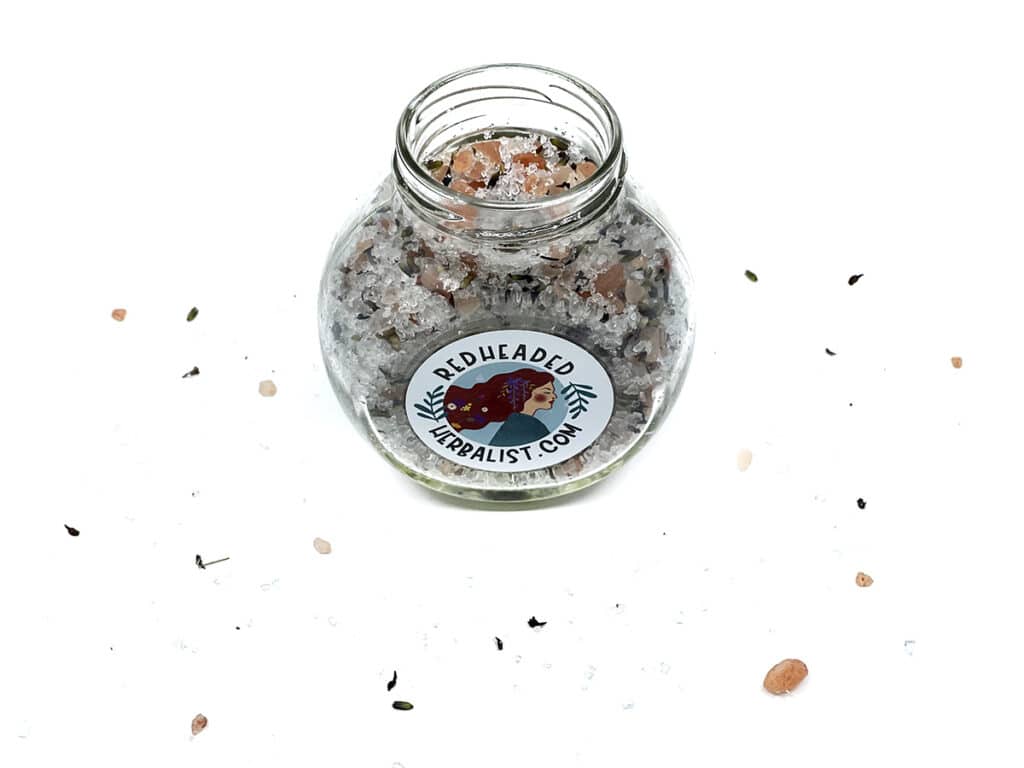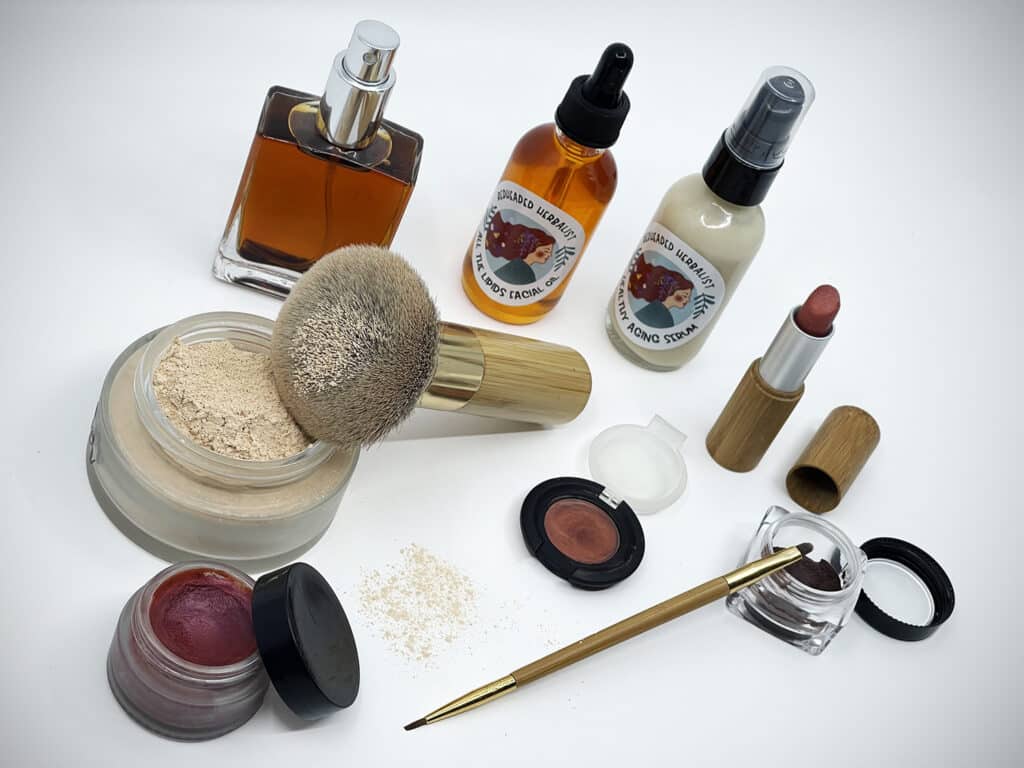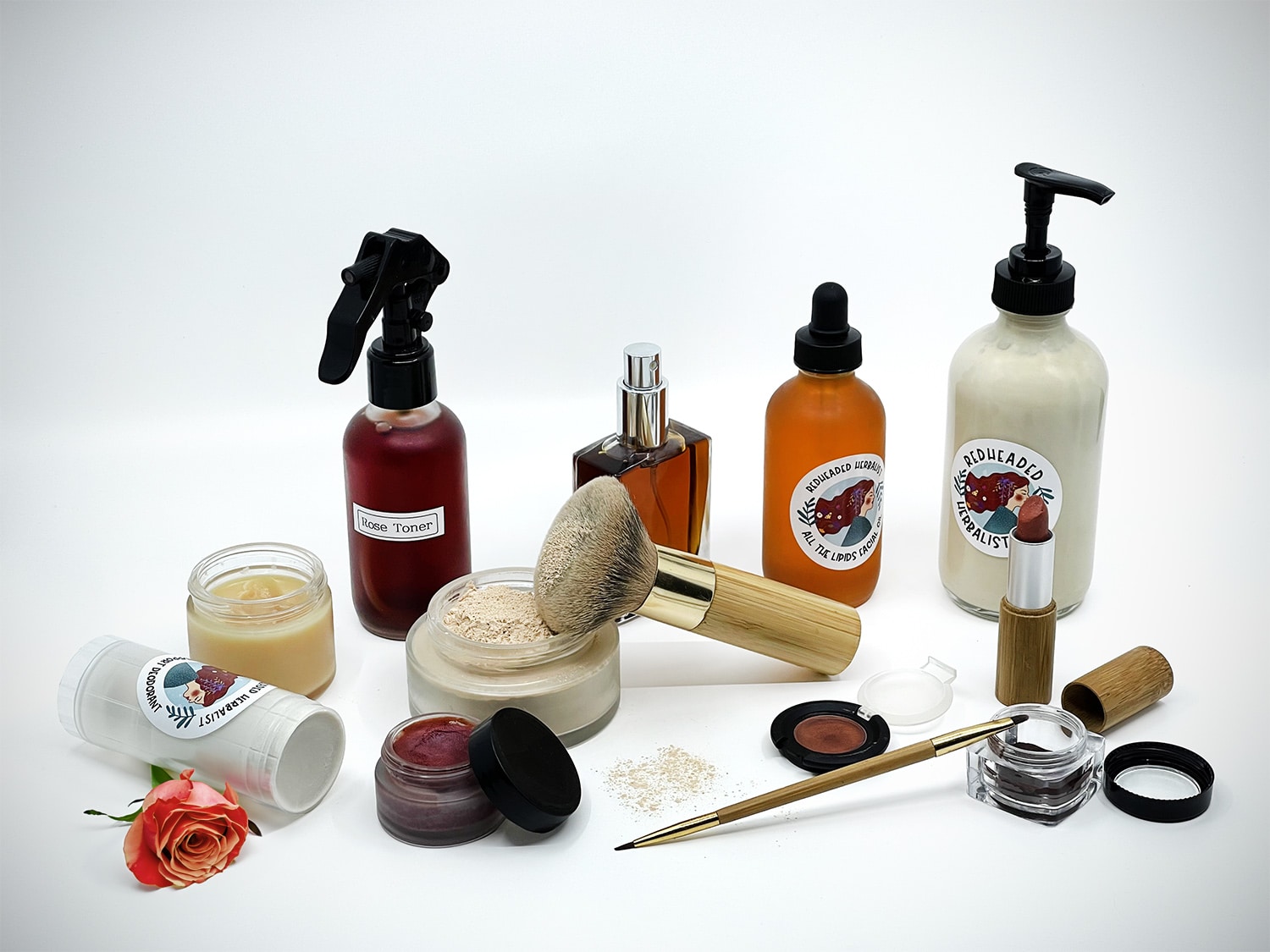With so many “natural” skincare products available on the market today, you may wonder why anyone would go to the trouble of making their own.
I never used to think much about the ingredients in my personal care products. My criteria was simple: if it smelled good, I was happy! Influenced by my more health-conscience friends, I took an interest in finding healthier alternatives to my big-brand staples during college. For years I spent extra money on brands claiming to be all-natural, toxin-free and good for my skin.
I took marketing jargon like “all-natural” and “organic” at face value, assuming the products really were made with wholesome ingredients. But when I looked more closely at the ingredient lists on my favorite products, I realized that many of them still contained long lists of synthetic chemicals I couldn’t pronounce. Terms like “parabens,” “phthalates,” and “PEGs” that I later learned were potentially harmful preservatives, fragrances and thickeners. I felt disappointed and misled and I began scrutinizing the back of every bottle in my bathroom.
I started small by swapping my regular facial cleanser and eye makeup remover for the oil cleansing method, using a 75-25 blend of organic extra-virgin olive and castor oil. For those who are not familiar, the rather counterintuitive sounding oil cleansing method is based on the basic principle we learned in high school chemistry that “like dissolves like.” This means that oil can effectively dissolve and remove oil-soluble impurities and grime, such as excess sebum, makeup, sunscreen and environmental pollutants.
Before long, I was following a variety of blogs for homemade skincare recipes using natural ingredients and things I already had in my kitchen like coconut oil, shea butter, clays, aloe vera, and essential oils. Following the recipes was fun and empowering and, best of all, I knew exactly what was in them.
If I’m being brutally honest, though, most of the homemade recipes I tried in the beginning felt like a compromise. They all seemed kinda rough and weren’t nearly as fun or luxurious feeling as my old store-bought favorites. I began wondering if I could do better.
Homemade deodorant was one of the first products I ever tackled, and my early attempts were less than satisfactory. Recipes I tried from various health blogs were messy and simply did not work for me. Later, when I started developing my own recipes, an early version of my mineral-enriched deodorant lacked sufficient glide and was so tacky it could have been called a deodorant-epilator hybrid. Ouch!
But that’s how we learn, right?
Once I got comfortable with the basics, I began branching out and experimenting with different combinations of oils and waxes, clays and botanicals. Learning to infuse oils with herbs and make herbal tinctures was a major breakthrough, allowing me to incorporate botanical extracts from homegrown and wildcrafted plants. (SO much cheaper than purchasing herbal extracts!)
So why worry about natural skincare in the first place?
You’ve probably heard that our skin is our largest organ. It’s true!
Did you know that the average adult has roughly 22 square feet of skin? With so much bodily real estate, it should come as no surprise that our skin is a reflection of what’s going on inside our bodies.
The canary in the coal mine, so to speak.
The health of our skin quite literally inseparable from the health of the rest of our body — particularly our liver function and the digestive system. Skin, liver and gut work together to break down and eliminate toxins absorbed by our bodies, whether through dietary intake, inhalation or skin contact. When the liver and digestive system do not efficiently perform this task, it can lead to the accumulation of pro-inflammatory compounds, which play a significant role, not only in skin issues such as acne, dry skin, eczema and psoriasis, but our health at large.
When our organs are functioning optimally, it reflects in the vibrancy and glow of our skin. But when our bodies are out of balance due to stress, poor diet or toxin exposure, our skin is one of the first places it becomes apparent.
By the same token, healthy skin plays a vital role in protecting our bodies from external elements and pathogens. Nourishing your skin properly can enhance its natural protective barrier function. The skin is the body’s first line of defense against external pathogens, including bacteria, viruses and fungi. Its outermost layer, the stratum corneum, is a physical barrier that, when intact and healthy, prevents these microorganisms from entering the body.
The cyclical relationship between our overall health and the health of our skin is undeniable. Healthy skin protects against pathogens and disease. A healthy immune system and absence of disease leads to healthier skin.
And around and around we go.
How permeable is our skin?
Just how concerned should we be about the ingredients in our topical skincare products? Since the skin is a barrier, can the chemicals actually penetrate the skin and enter the bloodstream?
The short answer is, it depends.
As mentioned earlier, the skin is not a completely permeable barrier. Our stratum corneum is composed of dead skin cells (corneocytes) and lipids (fats), which help to prevent the easy passage of molecules. This barrier is designed to protect the body from external elements and regulate the passage of substances in and out of the body. The ability of a substance to penetrate the skin and reach the bloodstream depends on various factors, including the size of the molecules, their chemical properties and the condition of the skin.
The size of the molecules matters. Smaller molecules and those with certain chemical properties can penetrate the skin more easily. For example, small molecules like certain vitamins, minerals and certain chemicals can be absorbed, while larger molecules, such as proteins or peptides, typically have more difficulty making it through the skin barrier.
The delivery vehicle also matters. For example, in the case of essential oils, water-based gels are the fastest carrier for getting essential oils to absorb into the skin. Aqueous creams are the next most effective way, followed by oily creams and fatty oils. This seems counterintuitive, though, since our skin’s lipid barrier is oil based. How is an aqueous gel the most effective way to transmit essential oils into the skin? According to Robert Tisserand of the Tisserand Institute, the answer is simple. Oil soluble essential oils *want* to be in an oily base. So when you apply a hydrogel containing essential oils to the skin, they rapidly move from the hydrogel to the oily sebum of the skin.
Neat, huh?
Some skincare products or pharmaceuticals may also contain penetration enhancers designed to improve the absorption of active ingredients. These enhancers can facilitate the passage of substances through the skin.
Likewise, damaged or compromised skin, such as cuts, burns or skin conditions like eczema, can also allow easier penetration of substances. The condition of the skin itself plays a role in its permeability, which brings us, full circle, back to the importance of protecting the health of our skin and its barrier function in the first place!
Customize your skincare
One of the most significant advantages of making your skincare products is the ability to customize them to your unique skin type, concerns and preferences.
Everyone’s skin is unique. What works for one person may not work for another. You can tailor your products to address your individual skin requirements and to suit your own definition of “natural.” Use ingredients that work best for you and avoid those that don’t.
If I had a nickel for every time I gravitated to a lovely jar of bath salts in an artisan shop, only to look at the list of ingredients and realize that straight essential oils had been mixed with the salts undiluted with no carrier oil. Sorry — major pet peeve. Luckily, beautiful bath salts are simple to mix and fun to customize to my preferences.
And not to brag, but since I always dilute my essential oils in a bit of carrier oil, my bath salts aren’t going to burn anyone.

Sustainable consumption
A happy byproduct of creating your own skincare products is that you can reduce quite a lot of packaging waste generated by store-bought products. I prefer to use glass containers wherever possible so I can clean them, sterilize them in the dishwasher and reuse them. I encourage friends to return their empty bottles with the promise of refills (a very effective incentive!)
Considering the vast surface area of our skin, using store-bought skincare products with potentially harmful chemicals can result in significant environmental pollution when they are washed off and enter water systems. Making your products using environmentally friendly and biodegradable ingredients helps reduce your ecological footprint.
Mindful self care
When you recognize your skin as a vital part of your overall health, you’re more likely to take a holistic approach to self-care. Creating your skincare products and tapping into the healing properties of plants and botanicals that have been used for skincare for centuries allows us to create a more mindful and intentional self-care routine.
Even the process of making your skincare products can be considered a form of self-care and mindfulness. Taking the time to create something for yourself, nurturing your skin and being conscious of the ingredients used can be a rewarding and soothing practice!
To my surprise, I found that blending and experimenting with ingredients to concoct my own toiletries, cosmetics and other personal care products was enjoyable and relaxing, in addition to empowering. It allows you to tap into your creative side and experiment with different formulations. I find researching specific herbs and oils for different skin issues is super rewarding. You can play with scents, textures and active ingredients until your heart’s content! ♥
Getting your feet wet
Ready to give DIY skincare a try?
Start simply with just a few basic ingredients and build your skills from there. It doesn’t have to be complicated. My first efforts were little more than a blend of tallow and beewax. You can make lotion with nothing more than water, oil and an emulsifier such as e-wax or lecithin.
While there will be an initial investment in purchasing ingredients and equipment, making your own skincare products can be incredibly cost-effective in the long run, particularly when you can infuse them with your own home-grown or wildcrafted botanicals that cost you little to nothing. Ethically sourced organic and wildcrafted dried herbs and essential oils can be found at online retailers such as Mountain Rose Herbs.
For those of us with discriminating (read: expensive) taste in skincare products (*ahem*), this is very good news! And if you choose to include powerful cosmeceuticals like concentrated vitamins and peptides in your formulas, you’ll find that it’s far cheaper to mix your own using ingredients from suppliers like Making Cosmetics, Formulator Sample Shop, Bulk Apothecary and Lotioncrafter.
Many high-quality natural ingredients can be purchased in larger quantities than what you find in commercial products, making them last longer, potentially saving you money over time.
Some basic items that will get you started:
- choose 1 or 2 favorite oils such as jojoba or coconut
- beeswax
- an easy-to-use emulsifier
- a humectant or two like raw honey or glycerin
- an astringent such as witch hazel
- mechanical exfoliants such as oatmeal, cornmeal sugar or salts
- skin-friendly clay such as bentonite, fuller’s earth or French green
- dried herbs — comfrey, chamomile or calendula are great multi-purpose skincare herbs
- essential oils — lavender, peppermint, tea tree and geranium are good inexpensive and multi-purpose oils to start out with
- a quality preservative
- a high-powered blender and/or an immersion blender
- a mortar and pestle or electric spice grinder
- a selection of small glass jars and pump/dropper/spray bottles
Of course, you don’t need to run out and buy all of this stuff at once. Pick one thing to make and determine what you’ll need to make it. Start small and add to your supplies as needed over time.
Do you make any of your own homemade skincare? What kinds of homemade products are YOUR favorites?
Share in the comments your favorite DIY tips and tricks! ♥





2 Responses
Great blog post! Could you please recommend a good resource for learning how to create a balanced blend of face oils (I’m not referring to Essential Oils, but to plant oils to be used on the face). I have been mixing oils based on their skin benefits and the feel they impart on the skin, but excluding those that are comedogenic. I would like to learn how the components of one face oil could complement another when combined to create a balanced blend and wonder if there is a resource out there that might help with that. Thank you very much!
Hi Che! Thanks so much for the kind words. I’m not sure if this is exactly what you’re looking for, but I find Humblebee & Me’s glossary of ingredients incredibly useful. Marie goes into granular detail for every kind of carrier oil you could imagine here: https://www.humblebeeandme.com/diy-encyclopedia/carrier-oils/
I also subscribe to Swift Crafty Monkey’s Point of Interest website. She has a wealth of info on everything science-y and geeky about formulating – including a deep dive on Emollients (oils, butters and esters): https://www.swiftcraftymonkey.blog/emollients-oils-butters-and-esters/ It’s well worth the $3/month IMHO.
Hope this helps! ♥